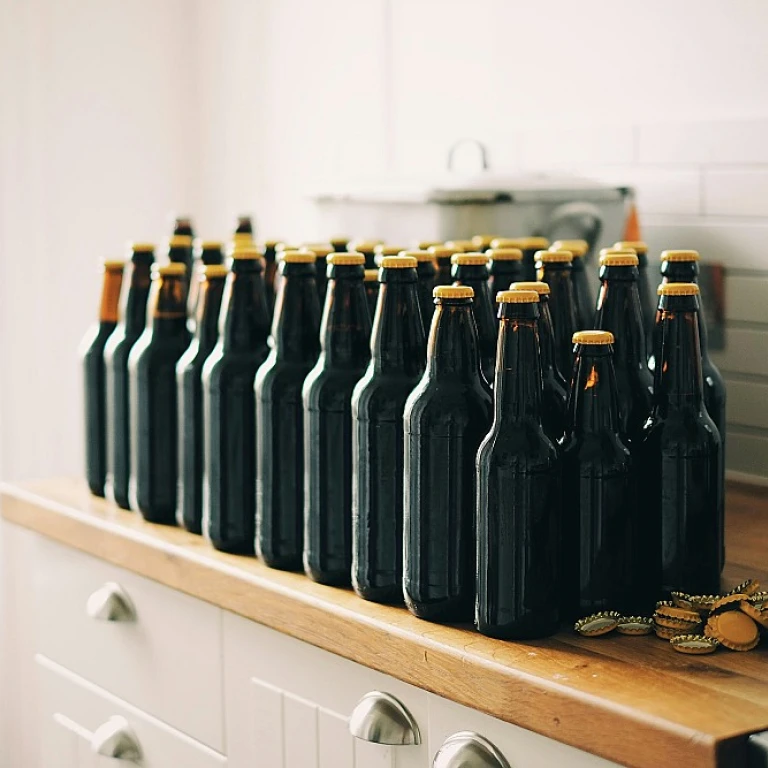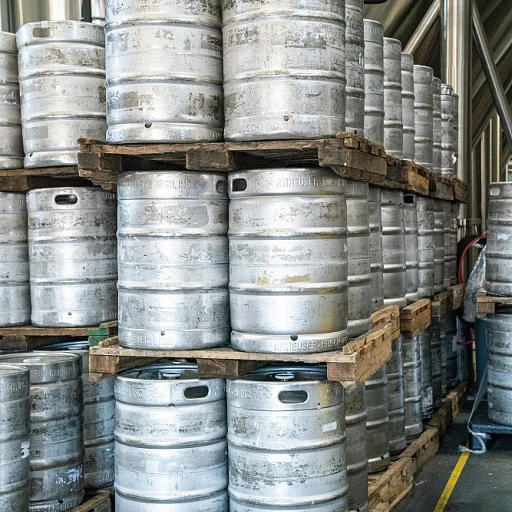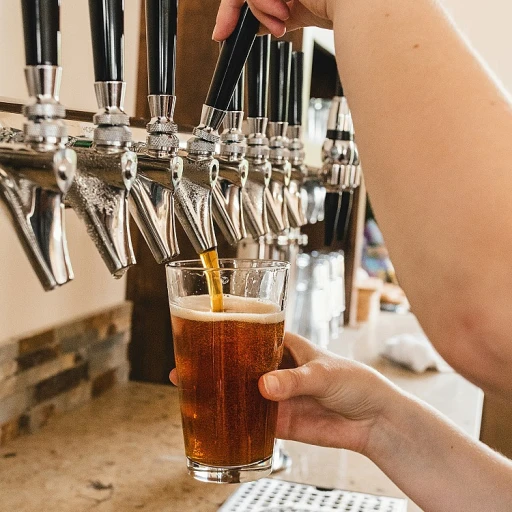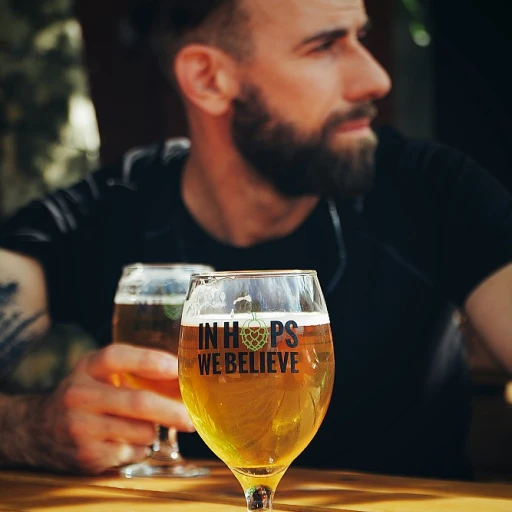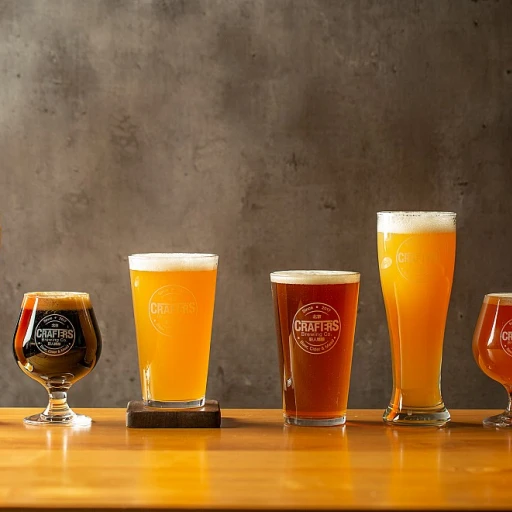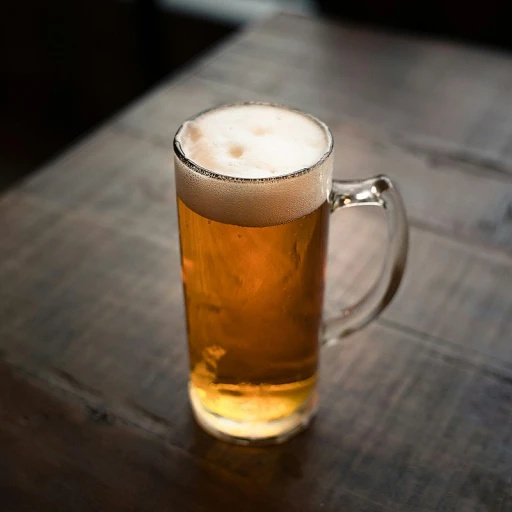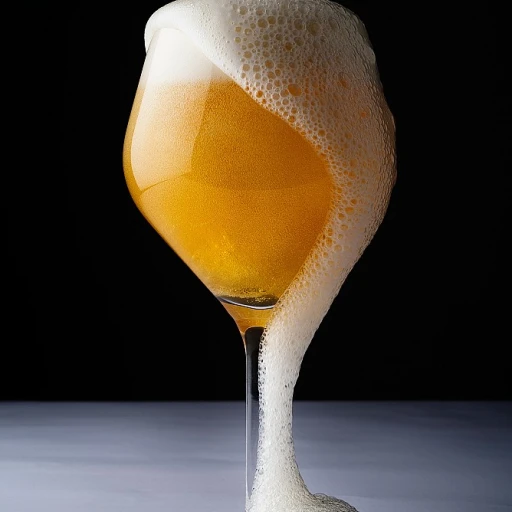
The rise of bottled beer: a historical perspective
The earliest bottled brews: where it all began
Bottled beer has been a staple for centuries, but it wasn’t always the go-to for beer lovers. The idea of bottling beer dates back to the late 16th century when glass bottles first gained popularity. This made beer more portable and extended its shelf life. Fast forward to the 19th century, and developments in pasteurization and bottling techniques revolutionized the beer industry, making bottled beer widespread.
Back then, pioneers like Henry Weinhard made significant contributions to the rise of bottled beer in the United States. Weinhard, a German immigrant, opened the Weinhard Brewery in Portland, Oregon, in 1862, helping to popularize bottled brews in the western U.S. region.
The golden age of bottled beer
The late 1800s through the mid-20th century marked the golden age of bottled beer. During this period, breweries across the globe began to embrace bottled beer as the primary method for distributing their brews. Technologies like crown caps emerged around 1892, making it easier to seal bottles and maintain the beer’s quality and carbonation.
Post-World War II, the popularity of bottled beer soared even higher. By the 1950s and 60s, family gatherings, sporting events, and outdoor barbeques commonly featured handy bottled brews. Brands like Heineken and Coors made their mark during this era, bringing premium and domestic lager options to avid beer enthusiasts.
The modern-day bottled beer scene
Today, bottled beer remains a beloved choice among beer aficionados despite the increasing popularity of draft and canned options. Craft beer in bottles has experienced a resurgence, with breweries offering unique and small-batch brews in beautifully designed glass bottles. This current trend not only elevates the drinking experience but also evokes a sense of nostalgia for the early days of bottled beer.
Consumers appreciate the efforts breweries take to package their beers in glass bottles. According to a 2022 report by the Brewers Association, 42% of craft beer consumers prefer bottled beer over other packaging types. This preference is driven by factors such as taste preservation, environmental impact, and aesthetics.
As we continue to enjoy the vast variety of bottled beer options available today, it’s essential to recognize the rich history behind this packaging method. Whether it’s a domestic lager or a Mexican lager import, bottled beers have retained their charm and continue to play a significant role in the beer industry.
Understanding ABV: what it means for your bottled beer
Breaking down alcohol by volume (ABV)
If you've ever glanced at a beer bottle and wondered what the ABV percentage meant, you're not alone. ABV, or Alcohol by Volume, is a standard measure used worldwide to quantify the amount of alcohol (ethanol) in an alcoholic beverage. It's a crucial factor that impacts the taste, strength, and even the price of your favorite bottled beers.
First off, let's talk about what ABV really means. ABV refers to the percentage of pure alcohol in your drink. For example, a beer with 5% ABV contains 5% ethanol and 95% other ingredients like water, malt, hops, and yeast.
Why ABV matters
The higher the ABV, the stronger the beer. But it’s not just about getting buzzed quicker—higher ABV also affects the taste. Beers with higher ABV tend to have more robust and complex flavors. On the flipside, lower ABV beers are often lighter and more refreshing, perfect for casual sipping or summer outings.
For light beers like Coors Light or Michelob Ultra, the ABV usually hovers around 4-5%. These beers are popular among those who prefer a less intense drinking experience. On the other hand, some craft beers boast an ABV as high as 12%, offering a richer, more complex flavor profile.
How ABV affects price and selection
The ABV can also impact the price of a beer. Generally, beers with higher ABV are more expensive because they require more ingredients and longer fermentation times. However, beers like Kona Big Wave or Modelo Especial Mexican offer a balance between cost and ABV, making them favorites among enthusiasts.
Expert insights on ABV
Jamil Zainasheff, a well-known homebrewer and beer judge, says, "Understanding ABV helps in choosing the right beer for the right occasion. High-ABV beers are perfect for slower sipping, while lower ABV options are ideal for social gatherings."
Comparing ABV in different types of beers
Domestic lagers and light beers like Coors Light and Michelob Ultra Superior usually have an ABV around 4-5%. On the other hand, craft beers in bottles can have an ABV ranging from 6-12%, offering a more varied taste experience.
Mexican lagers like Modelo Especial or Superior Light typically come in around 4.5-5.5% ABV, striking a perfect balance between flavor and drinkability. And if you're into IPAs, you’ll find they usually start at around 6% ABV, with some going up to 10% or even higher.
Keep your drink colder for longer
You might want to check out beer bottle koozies to keep your favorite high-ABV beer chilled to perfection on a hot day.
Comparing domestic and imported bottled beers
Domestic beers: the everyday favorites
When it comes to bottled beer, domestic beers often stand as the go-to choice for many. Take Coors Light for example; this lager with a modest ABV of 4.2% is a staple at gatherings and laid-back barbeques across the US. It’s light, refreshingly crisp, and its affordability doesn’t hurt either.
Another popular domestic option is Michelob Ultra. With an ABV of 4.2%, it’s branded as a superior light beer, praised for its minimal calorie content—ideal for those watching their intake while still enjoying a brew. According to a study by Nielsen, Michelob Ultra saw a 17.8% increase in sales in 2020 (Source: Brewbound).
Imported beers: international flavors brought home
Imported beers, on the other hand, bring an exciting range of tastes and textures, thanks to different brewing traditions and local ingredients. Heineken is the poster child of pint-sized international pleasure with its distinctively rich taste and an ABV of 5%. Originating from the Netherlands, Heineken has a broad fanbase, often considered a premium choice.
Let's not forget Kona Big Wave, a lager import beer hailing from Hawaii. This easy-drinking, tropical brew boasts a 4.4% ABV and brings a unique burst of island flavor to your beer pack. As per reviews, fans love its smoothness and the hint of pineapple.
Mexican lager imports: adding spice to the mix
Then there’s the special place reserved for Mexican lagers in many hearts. Options like Modelo Especial and Corona Extra are almost synonymous with summertime fun. Modelo Especial, with an ABV of 4.4%, is often reviewed as robust and full-bodied, earning its spot in family parties and beach trips alike.
Pacifico Clara is another notable Mexican lager, favored for its clean, crisp flavor and a 4.5% ABV. It’s that bit of coastal magic captured in a bottle, turning any moment into a mini-vacation. In a comparison of Mexican lager imports, Pacifico often ranks highly for its light and refreshing taste profile.
Craft beers: small batches, big flavors
Craft beer holds a special place for aficionados. A prime example is Sierra Nevada Pale Ale, which is not exactly an import but often rivals the imports in terms of complexity and taste. With an ABV of 5.6%, it’s beloved for its hoppy character and robust flavors. Consumer reviews frequently describe it as a balanced and flavorful choice that holds its own in the crowded shelves of bottled beer.
For another unique option, give the beer stick a try. A tool designed for those who dare to innovate their beer-drinking experience, ensuring their craft beer journey is as adventurous as it is delicious.
Exploring the world of Mexican lagers
Mexican lagers: an irresistible allure
Mexican lagers hold a special spot in the hearts of beer lovers. Often praised for their crisp, refreshing taste, they come in at a relatively low ABV, generally ranging from 4% to 5%. Popular options such as Modelo Especial, with an ABV of 4.4%, and Pacifico, at 4.5%, offer a light drinking experience that complements a wide variety of foods. This blend of taste and versatility makes them perfect for casual outings or festive gatherings.
Why mexican lagers stand out
One might wonder, what sets Mexican lagers apart from other beers? The primary factor is their distinctive brewing process which incorporates ingredients like maize (corn) alongside traditional barley. This not only lightens the body but also imparts a subtle sweetness that balances their characteristic crispness. Beer enthusiasts appreciate this unique brewing style, resulting in consistently high reviews and a loyal following.
Highlighting top mexican lagers
Let's go through a short list of standout Mexican lagers you should consider:
- Modelo Especial: This popular choice boasts an approachable 4.4% ABV, making it a great go-to beer for parties.
- Pacifico: Known for its lighter, crisp profile with an ABV of 4.5%, Pacifico pairs well with a sunny day at the beach.
- Dos Equis Lager: Offering a slightly higher ABV at 4.5%, it’s perfect for those wanting a bit more kick without overdoing it.
Domestic vs. imported mexican lagers
When it comes to choosing between domestically brewed and imported Mexican lagers, many beer enthusiasts prefer imported versions for their authenticity. Importing Mexican lagers ensures that you get the original taste that Mexican brewers intended, crafted with traditional methods and local ingredients. For instance, imported beers like Corona Extra (ABV 4.6%) are often seen as more reliable in terms of flavor and quality.
The verdict
In the end, the love for Mexican lagers is hardly surprising. Their combination of light body, refreshing taste, and unique brewing process has deservedly earned them a spot in the fridges of beer aficionados worldwide. Whether you're cracking open a crisp bottle of Modelo Especial Mexican lager or reaching for a Dos Equis, you're in for a treat. So the next time you're at your local store or bar, give these delightful bottles a shot—you won’t be disappointed.
Craft beer in bottles: a growing trend
Craft beer's bottle influence
Craft beer in bottles ain’t just a passing fad; it's a full-fledged movement grabbing serious steam. Back in the day, grabbing a cold one meant reaching for whatever macros were on shelves. But now, craft beer has stormed the bottled beer market, bringing all that local flair and unique brews straight to your home. According to the Brewers Association, craft beer sales witnessed a 3.6% growth in 2022, a significant uptick from previous years, signaling an increasing consumer interest in these bottled delights.The variety in craft beer bottles
When you dig into the craft beer scene, you find everything from IPAs, stouts, and porters to more experimental brews like sour ales and goses. Take Kona Big Wave for instance. With its approachable ABV of 4.4%, this golden ale offers a smooth, drinkable experience, proving that craft beer can be both sophisticated and easy-going.Consumer reviews and preferences
Bottled craft beers not only rate well among enthusiasts but have become a staple in beer reviews. Sites like BeerAdvocate and Untappd are flooded with glowing reviews on bottled alternatives. Many craft beers, like Michelob Ultra Superior Light, rack up high ratings for their unique flavors and sessionable characteristics. Reviews mention the superior taste often attributed to craft breweries’ dedication to quality ingredients and meticulous brewing processes.Environmental considerations
The choice of bottling in glass also aligns well with sustainability trends. Glass bottles are highly recyclable, adding an eco-friendly edge to your drinking experience. In comparison, cans may hold a smaller carbon footprint but glass recycling often retains quality better, benefiting repeat use (source: EPA). Sure, bottles might be heavier and bulkier in a beer pack, but the classic appeal and environmental benefits give them a solid edge.Case studies: Craft breweries excelling in bottles
Examples of breweries excelling with bottled beers are plenty. Samuel Adams' Boston Lager, a staple in American craft beer, continues to impress in bottle form. Not to forget the rising popularity of Mexican lagers like Modelo Especial which showcases the special craftmanship in a bottle. Then there's the domestic lager scene with Coors Light and Michelob Ultra. These mainstays still find favor among consumers looking for light, refreshing options. Consumers are also increasingly aware of the craft beer journey with bottled options, enhancing the entire drinking experience—from cracking open a cold one to savoring every last sip. The realm of bottled craft beers is more than alive; it's thriving, and for those wanting to explore unique tastes, it’s an unmissable path. If you're looking for other ways to enhance your drink, check out beer holders for keeping it cool and convenient.The best bottled beers: a comprehensive list
Domestic lager favorites
When you think about the best bottled beers, it’s impossible to overlook the plethora of domestic lagers dominating the market. Americans love their classics – the likes of Coors Light and Michelob Ultra. Coors Light, with a superbly refreshing taste and an ABV of 4.2%, is a go-to for many. Michelob Ultra Superior Light is another favorite, boasting just 95 calories per bottle, making it a prime pick for health-conscious beer lovers.
Top-rated imported lagers
Imported beers bring a rich, international flair to your bottle collection. Heineken, one of the most iconic lagers from the Netherlands, is celebrated for its slightly bitter taste and a robust ABV of 5%. Mexican lagers are also making waves. The Modelo Especial Mexican lager is a must-try, known for its smooth, crisp flavor. The Kona Big Wave Lager Import Beer, while not from Mexico, brings a Hawaiian twist that's light and easy-drinking.
Craft beer excellence
If you want to explore the packed world of craft beers, the list of top bottled beers wouldn't be complete without mentioning some stellar examples. Take Kona Big Wave, for instance, with its golden hue and slightly fruity taste. It's a delightful brew with an ABV of 4.4%. Then there’s the rise of Ginger Beer bottles, catering to those who enjoy a bit of a zing.
Bottles of ale goodness
For ale enthusiasts, the bottled beer scene has plenty to offer. English ales like Fuller's London Pride are beloved for their balance of malt and hop flavors. With an ABV of 4.7%, it provides a rich, satisfying taste without overwhelming alcohol content. Domestic and import ale varieties continue to evolve, constantly offering something new for curious palates.
Bulk buys: beer packs
Sometimes, grabbing a beer pack bottles assortment is the best way to go. These packs usually include a mix of domestic lager, ale, and even craft selections, allowing you to compare and find your favorites. Plus, they often come at a lower price per bottle, which is a win for any beer fan.
The environmental impact of glass bottles
Glass bottles and their environmental footprint
Let's chat about our charming beer compadre, glass. While bottles are a classic for brews, they've got quite the story when it comes to environmental impact. On one hand, glass bottles do offer certain eco-friendly benefits; they're 100% recyclable and can be recycled indefinitely without any loss of quality or purity. That's quite impressive, right? In fact, according to the Glass Packaging Institute, recycling just one glass bottle saves enough energy to power a computer for 30 minutes.
The recycling rate of glass bottles
But, hold your horses. The trick lies in whether or not these bottles actually make it to the recycling bin. Statistics tell us that only 33% of glass containers in the US are recycled. Compare that to aluminum cans, which boast a recycling rate of nearly 50%. Now that's a bit of a kicker, considering all that potential energy saving!
Impacts on carbon footprint
A thing to note - manufacturing new glass bottles isn't exactly a walk in the park, climate-wise. Producing new glass involves melting raw materials (like sand and limestone) at high temperatures, a process that demands a great deal of energy. This forms a significant chunk of the beverage industry’s carbon footprint. The EPA even points out that creating a recycled glass bottle uses about half the energy of one made from virgin materials.
Lightweighting bottles: a possible solution
Enter 'lightweighting'. A pretty neat concept where companies have sought to produce lighter glass bottles to reduce both resource use and shipping emissions. As an example, Heineken introduced lighter bottles in 2013, cutting glass usage by around 11% per bottle. That’s a win for the environment and for your beer-holding arm.
Alternatives and innovations
But we ain't stopping at just recycling and lightweighting. The beer industry is also exploring alternatives like biodegradable bottles and returnable bottle systems. In some European countries, returnable glass bottle systems have decreased the environmental footprint of beer packaging significantly. Germany leads the pack with around 82% of its beer sold in reusable bottles.
Comparing with aluminium cans and kegs
Of course, cans and kegs have their own environmental profiles too, with pros and cons. Aluminium cans are lighter and more efficient to transport, but they also come with their own resource extraction impacts. Kegs, particularly reusable ones, offer an eco-friendly option for draft beer lovers but require an effective logistics system to manage returns.
Excited to chime in with your thoughts or eco-friendly beer hacks? Drop a comment or checkout our beer holders guide to keep your drink cool and convenient while you ponder on these eco thoughts!
Expert tips for enjoying bottled beer
Proper storage: keep your bottled beer fresh
First things first, make sure you store your bottled beer properly. Temperature control is crucial. According to experts, beer should be stored at around 50-55°F (10-13°C) for optimal taste. Light can be a beer's enemy, causing something called 'lightstruck' or 'skunky' beer. Using brown glass bottles is a common method to protect beer from harmful UV rays. Notorious beer critic Michael Jackson noted that careful storage enhances a beer's flavor profile, comparing it to maturing fine wine.
Choosing the right glassware
Different beers, different glasses. Yes, it does matter! The right glassware can elevate the aroma and taste of your beer. For example, a pilsner glass is perfect for light lagers like Coors Light, while snifters are ideal for high ABV beers. Experts recommend using a beer glass that complements the style of beer you’re drinking. According to a 2020 study, the choice of glass can increase your sensory experience by 20%.
Pouring technique: the unsung hero
Pouring your beer the right way can make a world of difference. Start by holding your glass at a 45-degree angle, pour slowly and let it build, then straighten the glass as you near the top. This technique reduces excessive foam while releasing the beer’s full aroma. As per beer expert and brewer Garrett Oliver, 'A gentle pour means your beer stays as it should be—a fantastic sensory experience.'
Temperature: not too cold, not too warm
Serving your beer at the right temperature is as crucial as storage. Most domestic beers like Michelob Ultra or draft beer taste best at around 40-45°F (4-7°C). However, high-ABV beers and ales might need a slightly warmer serving temperature. Beer Sommelier Matt Simpson advises, 'Chilled but not ice-cold allows for fuller flavor profiles to emerge.'
Best practices for pairing with food
Pairing bottled beer with the right food can elevate both the dish and the brew. Light beers like Mexican lagers complement spicy dishes, while domestic lager pairs excellently with grilled meats. For craft beers, a good rule of thumb is to pair hoppy IPAs with rich, fatty foods. Expert Cicerone Ray Daniels suggests, 'The right pairing can bring out hidden notes in both the beer and the food—it's a culinary art.'

